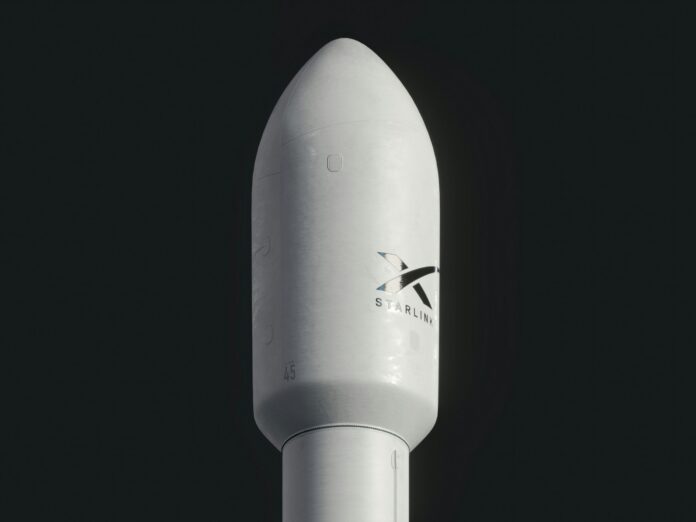SpaceX’s satellite internet service Starlink is enjoying rapid user growth, increased speed, cut latency, and is now teasing Gen3 satellites.
Starlink is in the middle of an extraordinary growth spurt, welcoming over 2.7 million new users in the last year alone and pushing its global customer base past the six million mark. This isn’t just a case of signing up more people; it’s been made possible by a relentless campaign of launches and ground-level investment.
Over the past twelve months, SpaceX has flown over 100 missions dedicated to Starlink, placing more than 2,300 new satellites into the sky. Back on Earth, the company has poured money into its network of ground stations and the technology that ties it all together.
More users often means more congestion and slower speeds, but Starlink seems to be defying that logic. All that new infrastructure is paying off in a very real way for its customers. We’re now seeing download speeds that can genuinely compete with fibre broadband.
In the US, which Starlink uses as a key benchmark, the typical download speed during busy evening hours is now approaching 200 Mbps. Even the company’s most basic plan is delivering a solid 100 Mbps download and 20 Mbps upload experience in most areas—more than enough for a household to stream, game, and work from home.
Despite the challenge of serving millions of new customers, the team at Starlink says its focus remains squarely on improving the overall quality of the connection.
Starlink goes to war on latency
Of course, speed is only half the story. The key to making an internet connection feel fast and responsive is low latency.
SpaceX is obsessed with crushing latency, which is vital if Starlink is to be viable for certain applications. Even prior to the Starlink Gen3 satellites, they’re aiming for a rock-solid 20 millisecond (ms) delay, and they’re already close. Recent data from June 2025 shows a typical latency of just 25.7ms during peak hours in the US. That’s a number that gives some ground-based fibre providers a run for their money.
To keep tabs on this, Starlink constantly checks its own homework, pulling anonymous data from millions of user routers every 15 seconds. This is all made possible by a massive network of over 100 ground stations in the US alone, which act as the bridge between the satellites and the wider internet.
Real-world crises show the resilience of internet satellites
Perhaps Starlink’s most compelling advantage is its sheer resilience. With over 7,800 satellites overhead, your dish always has multiple connection options. This gives the network a built-in immunity to earthly problems.
When a digger accidentally cuts through a fibre optic cable or a storm knocks out power, traditional broadband goes dark. Starlink, however, keeps on working thanks to its space-based laser links that let the satellites talk to each other directly, bypassing any problems on the ground.
This isn’t just a theory; it’s become a lifeline in real-world crises. From wildfires in Maui and Canada to devastating floods in Texas, Starlink has stepped in to provide a vital communications link when all else has failed. It even kept users online during a massive power cut that affected the whole of Spain and Portugal, proving its worth as a truly independent backup.
And, of course, despite the controversies, Starlink became vital for Ukraine after Russia launched its invasion and targeted traditional communications infrastructure.
Building for the future and Starlink Gen3 satellites
So, how is Starlink keeping up with all this demand? By constantly adding more capacity to its network in space. Right now, it’s adding over 5 Terabits per second (Tbps) of bandwidth every week with its current Gen2 satellites.
Special attention is also being paid to the planet’s extremes. To improve service in places like Alaska, Starlink is launching hundreds of satellites into polar orbits, a move set to double the capacity for customers in high-latitude regions by the end of this year.
But the truly game-changing developments are still on the horizon. Get ready for Starlink Gen3 satellites, which SpaceX hopes to start launching in early 2026. The numbers here are almost difficult to comprehend. Each of these new satellites will offer ten times the download capacity of the current models.
When launched (hopefully successfully, given the recent failures) on the colossal Starship rocket, a single mission will add 60 Tbps of capacity to the network—more bandwidth in one go than many entire satellite constellations have today.
See also: ISAC will turn 6G networks into a giant radar system

Looking to revamp your digital transformation strategy? Learn more about Digital Transformation Week taking place in Amsterdam, California, and London. The comprehensive event is co-located with IoT Tech Expo, AI & Big Data Expo, Cyber Security & Cloud Expo, and other leading events.
Explore other upcoming enterprise technology events and webinars powered by TechForge here.
👇Follow more 👇
👉 bdphone.com
👉 ultractivation.com
👉 trainingreferral.com
👉 shaplafood.com
👉 bangladeshi.help
👉 www.forexdhaka.com
👉 uncommunication.com
👉 ultra-sim.com
👉 forexdhaka.com
👉 ultrafxfund.com
👉 bdphoneonline.com
👉 dailyadvice.us
